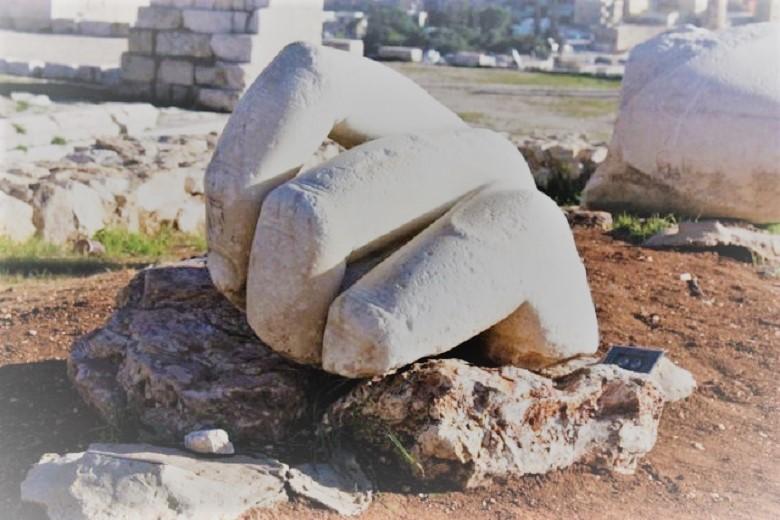In the Jordanian capital, Amman is a unique, very ancient place – the Temple of Hercules. These ruins, inherited by the Arabs from the Romans, have a vibrant history, but the primary value of the temple is the gigantic hand. Instead, what remains of her are giant fingers and an elbow. The size of the entire statue can only be guessed at. But why was it created, and where did the rest of its parts go?
According to historians, the temple was built in the second century AD – during the reign of Marcus Aurelius. It was considered the city’s main sanctuary and, presumably, was erected in honour of Hercules. However, the local architects failed in completing it to the end because there were wars. In particular, only six 11-meter columns were fully completed at the sanctuary, although scientists assume that they were planned to be made at least ten to twelve. Researchers even managed to recreate the approximate appearance of this beautiful building.
By the way, the place where it was built was considered sacred even in more ancient times. Presumably, in BC, when the city was the capital of the Ammon kingdom, there was a temple of the Ammonites, which was later destroyed: new deities and new heroes appeared in subsequent generations.
The fact that the temple of the Romans is dedicated to the ancient demigod Hercules was explained to archaeologists by coins. These coins depicting this mythical hero was found in large numbers, as well as a fantastic find – fragments of a giant marble hand (part of the hand and elbow) discovered.
Against the background of these vast fingers, modern visitors look like tiny insects. Well, about how impressive the whole figure looked, one can only guess! Scientists calculated that the height of Hercules reached at least 12-13 meters, which means that he was almost the most prominent figure made of marble in the history of humanity and the giant statue of the Greco-Roman period.
Hercules was highly revered by the ancient inhabitants and especially by the warriors. Both the Greeks and the Romans considered this deity to be the personification of strength and fearlessness. So it is not surprising that in honour of him, the ancient architects sculpted a figure of such considerable size. And we can only admire and marvel at how they managed to do such a tremendous job!
As for the reasons for the destruction of the statue, the researchers have only one version: the giant Hercules could have crashed during one of the strongest earthquakes that have repeatedly occurred in this area. True, it remains a mystery where the rest of the marble body went. On the one hand, it is unlikely that they split into such small pieces that they could not be detected. On the other hand, for vandals or just residents, scattered marble fragments could be of great value.
No part of the hand is considered a different sculpture, which received the official name “Hand of Hercules”, and tourists worldwide come to gaze at this sight.
Seeing the famous fragment of a hand, visitors to the ancient ruins immediately pay attention to the “neatly trimmed” nails of marble fingers, admiring: wow, men also did manicure in the days of antiquity!
The very same hill on which the temple ruins are located in an excellent observation deck from which a gorgeous view of the city opens.
